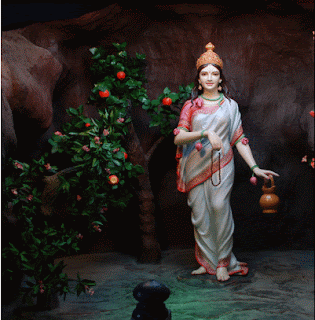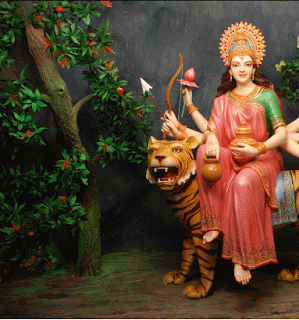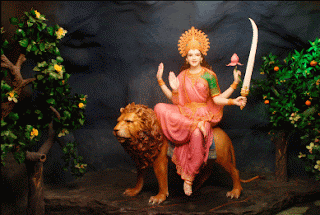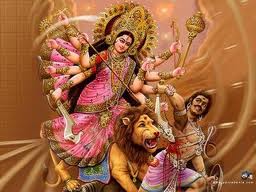Guru Brahma Mahima Alekha Saranam!
"GURUMAHIMAGADI - DHARMADHAM"
Main Features:
Satya Sanatan Mahima Dharma -
(Visuddhadwait Brahmabad)
The Founder of Mahima Dharma -
(Prabuddha Guru Mahima Swami)
Philosophy of Mahima Dharma -
(Mahima Dharma Darshan)
Principles of Mahima Dharma -
(Mahima Dharma Sidhant)
Hallmark of Mahima Dharma -
(Sannyas Dharma)
Highest body of Mahima Dharma -
(The Adhyaksha Sabha)
Preacher of Mahima
Dharma:
(a)
Mahima Swami/ Mahima Prabhu
(b)
Mahima Gosai
(c)
Dhulia Gosai
(d)
Jaladhari Gosai
(e)
Faladhari Gosai
(f)
Kheerdhari Gosai
(g)
Balkaladhari Gosai
Mahima Dharma based
on:
(a) Jnana
(b) Bhakti
(c) Karma
(d) Yoga
Mahima Dharma Samaj:
(a)
Balakalambardhari and
(b)
Kaupinidhari
Mahima Dharma says
about:
(a) Abadhutashram (Sannyas)-
(i) Para sanyasi
(ii) Apara sanyasi
(b) Grihastasharm (Householder)
Apara Sanyasi in Mahima Dharma:
(a)
Bairagi (1st
stage) – Abhaya, Brahmananda and others
(b)
Das (2nd
stage) – Sadhu Gadadhar Das, Madan Das and others
(c)
Baba (3rd
stage) – Brahmabadhut- Pagal Baba, Mohan Baba and others
Para Sanyasi in Mahima Dharma:
Dutiya Panthy
1.
Rajib Charan Das
Baba
2.
Biswanath Das Baba
3.
Anadi Charan Das
Baba
Trutiya Panthy
1.
Raghunath Das Baba
2.
Nanda Kishore Das
Baba
3.
Bauri Bandhu Das
Baba
4.
Benudhar Das Baba
5.
Sri Charan Das Baba
and many others
Mahima Dharma Samiti:
(a)
Satya Mahima Dharmalochana Samiti (1934)
(b)
Satya Mahima Dharma Granthkosha Samiti (1935)
Daily work (Neeti
Pali) at Joranda Gadi:
(a) Mandir neeti
(b) Dhunistapana
(c) Balyalila
(d) Bhajan neeti
(e) Satsang
(f) Saran Darshan
(b) Dhunistapana
(c) Balyalila
(d) Bhajan neeti
(e) Satsang
(f) Saran Darshan
Worship (Yanja
Samagri):
(a)
Agarbati/ Dhup
(b)
Camphor/ Karpoor
(c) Saint/ Atar
(d)
Ghee/ Ghea
(e)
Honey/ Madhu
(f)
Milk/ Dugdha
(g)
Molasses/ Gud
(h)
Banana/ Kela/ Kadalee
(i)
Coconut/ Nariyal/ Nadia
(j)
Chidua/ Chuda
Musical Instruments:
(a)
Bhajan
(b) Chautisha
(b) Chautisha
(c)
Khanjini
(d) Gini
(d) Gini
Miraculous Places at Joranda
Gadi (Peetha):
(a)
Darshan Sthali
(b)
Bhikshy Mandap
(c)
Ghanta Ghar
(d)
Chaumuhani Kupa
(e)
Balyalila Mandap
(f)
Sabha Griha/ Baithak Ghar
(g)
Gausala
(h)
Dharmsala - (Aamba mula, Panasha mula, Bela mula,
Bamphi mula)
Temples at Joranda
Gadi:
(a) Mahima Gadi Mandir – constructed on the spot where Mahima Swami vanished.
(b) Sunya Mandir – an empty temple to worship the Sunya vasi Maha Prabhu.
(c) Satya Mahima Sagar Dhuni Mandir – a temple where Dhuni the eternal fire is left.
(d) Niti Mandir – a temple where Niti articles are preserved.
(a) Mahima Gadi Mandir – constructed on the spot where Mahima Swami vanished.
(b) Sunya Mandir – an empty temple to worship the Sunya vasi Maha Prabhu.
(c) Satya Mahima Sagar Dhuni Mandir – a temple where Dhuni the eternal fire is left.
(d) Niti Mandir – a temple where Niti articles are preserved.
Mahima Prabhu’s first & last Pupil (Prathama-Shesa Shishya):
Govind Baba and Nand Baba are
the only ones who are allowed to wear Balkal.
Mahima Gosai’s great Devotee:
Saint-Poet Bhima Bhoi, whom he
had given gyanaloka and by the grace of Him Bhimabhoi speeches continuous into
four peoples who were unable to write sometimes.
Extra Ordinary Things are created by Mahima Swami:
Abana Mandir
Akhanda Dhuni
Aman Pura
Anamika Pada
Argali Kabat
Asadhana Marga
Brahma Anga
Brahma Dhuni
Brahma Mandal
Brahma Saran
Durgam Diksha
Mahanityapura
Mahasunyavashi
Mahima Dharma
Mahima Swami
Nigam Bhuban
Nigam Pada
Nirguna Brahma
Nirveda Dharma
Nishkam Yoga
Sunya Gupata Bhanda
Sunya Purusha
Sunya Vashi
Most Famous Books on Mahima Dharma:
- Alekh Parambrahma Darshan (Purbardha) published by Utkal University
- Alekh Parambrahma Darshan (Utarardha) published by Satya Mahima Dharmalochana Samiti
- Abhay Kavacha
- Adiyanta Gita
- Alekha Jyoti
- Alekha Purana
- Ashtaka Bihari Gita
- Bangala Atha Bhajana
- Bhagabat Sara Satyadharma
- Bhajana Mala
- Bhakta Bhimabhoi
- Bhakti Naivedya
- Biswanatha Baba (English)
- Brahma Chalaka
- Brahma Kavacha
- Brahma Nirakshan Geeta
- Chautisa Grantha Mala
- Dharma Dhara
- Dhenkanal Darpana
- History of Mahima Dharma
- History of Mahima Dharma (Hindi)
- Jagata Uddhar Heu
- Mahim Dharma Darshan Grantha
(English)
- Mahim Dharma Darshan Grantha
(Telgu)
- Mahima Bhakti Rasamruta (Part-I)
- Mahima Bhakti Rasamruta (Part-II)
- Mahima Dharma (Gruhastha)
Subhakarma Bidhan
- Mahima Dharma (Gruhastha)
Subhakarma Bidhan (Bangla)
- Mahima Dharma (Gruhastha)
Subhakarma Bidhan (Telgu)
- Mahima Dharma Abhibhasan-114
- Mahima Dharma Abhibhasan-116
- Mahima Dharma Abhibhasan-117
- Mahima Dharma and Boudha Dharma
- Mahima Dharma Darsan-Puri
Prabandha
- Mahima Dharma Darsan-Puri
Prabandha (English)
- Mahima Dharma Darsan-Puri
Prabandha (Hindi)
- Mahima Dharma Darsantatwa
- Mahima Dharma Divyagyanaloka
- Mahima Dharma in Odisha
- Mahima Dharma Parichaya
- Mahima Dharma Pradeep
- Mahima Dharma Pratipadak
- Mahima Dharma Pratipadak
(Bangla)
- Mahima Dharma Pratipadak (Hindi)
- Mahima Dharma Pratipadak (Telgu)
- Mahima Dharma Sachetabanee
- Mahima Dharma Sankhipta Itihaasa
- Mahima Dharma Swarup
- Mahima Dharma Swarup (Telgu)
- Mahima Dharma Tatwasara
- Mahima Dharma Vishwa Itihaasa
- Mahima Jyoti
- Mahima Mahaprasad Geeti
- Mahindra Bhajana Mala
- Nirveda Sadhana
- Prachalita Dharma Dharana and
Mahima Dharma
- Sadhu Geeti
- Satya Mahima Dharma Parichaya
- Shreemad Chinmay Brahmagita
- Siddha Bada Krupasindhu baba
- Siddha Sadhu Charitamruta
- Smruti Nishedha Gita
- Stuti Chintamani
- Tapovana
- Tatamata Geeti
There is a Naag (snake)-Basukhi atop the Sunya Mandir which indicates the entire Universe is save by Her. The hood of Naag save us from heavy rain, too cold and unbearable hot, sad and sorrow etc.
Written by- Prahallad Sahoo











